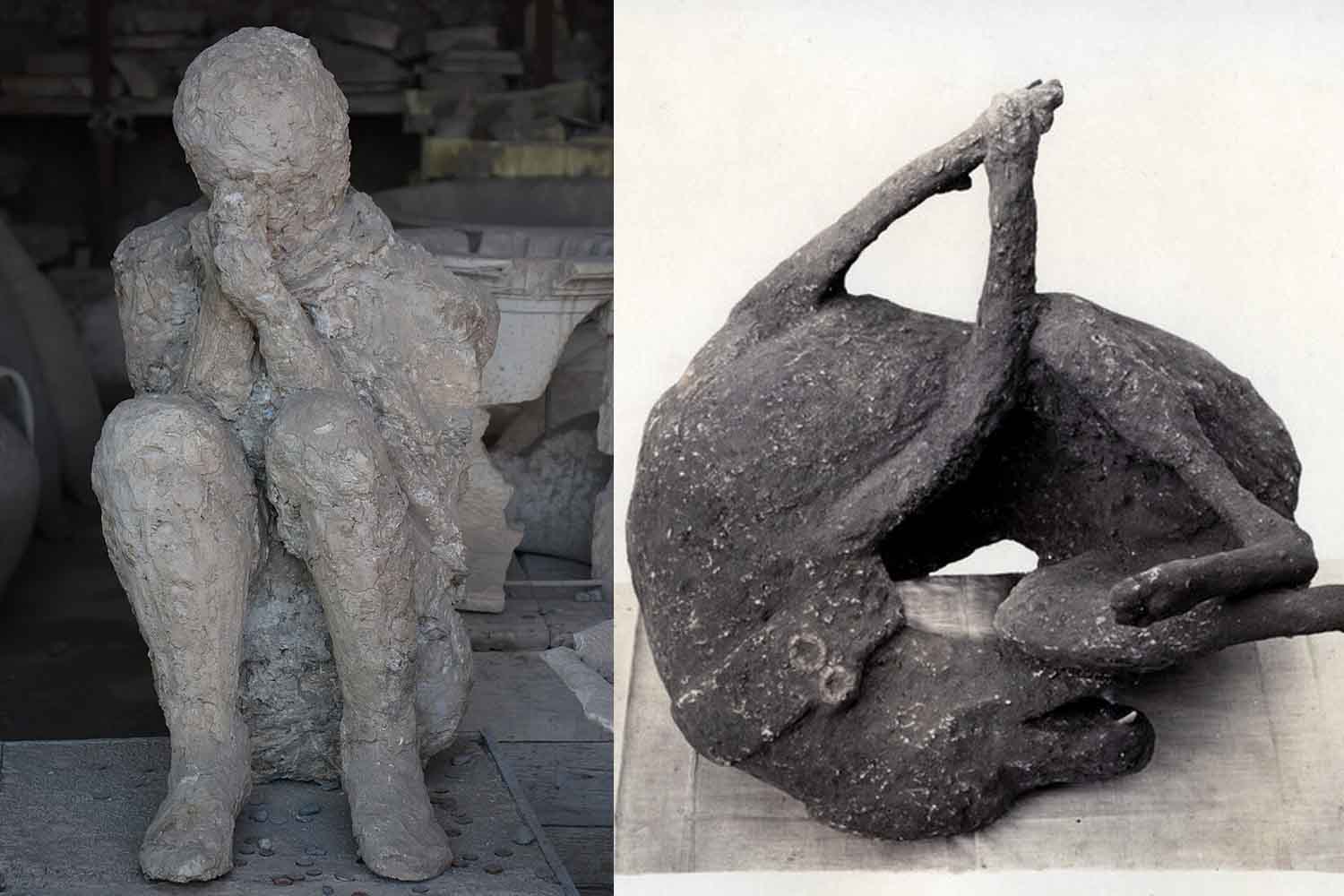Genetics rewrites the history of Pompeii: remains of five individuals analyzed to discover sex, origin, kinship and physical traits never detected before

Table of contents
For years, tour guides and textbooks have constructed romantic narratives around the plaster casts that immortalize the final moments of Pompeii’s inhabitants, caught by surprise by the eruption of Mount Vesuvius in 79 AD. Mothers clutching their children, families united in farewell, lovers embraced in a final hug: moving stories but often based more on scenic intuition than scientific evidence.
Today, thanks to an innovative study published in Current Biology, science takes precedence over legend. A team of researchers analyzed microscopic bone fragments preserved inside 14 Pompeian casts. What emerged was a completely unexpected portrait: the victims were not relatives, nor did they represent the emotional bonds that had been attributed to them for decades.
DNA unmasks stereotypes
In the emblematic case of the House of the Golden Bracelet, the adult who for decades was believed to be a mother, thanks to the refined jewelry worn and the presence of a child on their lap, turned out to be a man with no biological connection to the child. Another adult present in the same room, believed to be the “father” of the family, showed no kinship with the other two either.
The House of the Cryptoporticus, on the other hand, housed two embracing people, always identified as “sisters”: here too, DNA analysis revealed a male individual. Genetics has therefore called into question the entire symbolic construction of the Pompeian casts. All five individuals examined were males and showed no kinship up to the third degree.
Genetic analyses, performed on five individuals with sufficient data coverage, allowed for partial or complete reconstruction of mitochondrial genomes, the definition of paternal lines (Y-DNA), and the exclusion of modern contamination. The emerging picture is clear: none of the analyzed individuals were related.
Heterogeneous origins
The study compared genetic profiles with thousands of ancient and modern individuals, revealing a strong ancestral component linked to early farmers from Anatolia and the Levant. In some cases, genetic contributions associated with Neolithic Iran emerged, and even a steppe trace, typical of populations from Eastern or Northern Europe.
One of the victims, from the famous Villa of the Mysteries, possessed a genetic mix between Middle East and Europe, but isotopes from tooth enamel (strontium and oxygen) indicate that they grew up locally, in the central Italy area.
The Pompeians were not “Italian” in the modern sense: their roots were connected to migrations, trade, and cultural contaminations
This genetic picture confirms what has already been observed in previous studies on Imperial Rome: Italy in the 1st century AD was a multicultural crossroads, far from the idea of a homogeneous population.
Beyond the myth: what can we really say today about the eruption victims?
The analyses also reveal data on physical traits: the adult with the golden bracelet had dark skin and black hair, other individuals had brown eyes. Furthermore, the absence of long sequences of homozygosity in the studied genomes excludes widespread practices of marriage between close relatives, indicating a genetically diversified population.
The study definitively dismantles the idea that physical proximity automatically means emotional or family bond. The bones preserved in the casts are incomplete, sometimes even rearranged during restorations. Researchers warn: casts are powerful icons, but should not be interpreted lightly.
The real strength of this research is to transform romantic hypotheses into verifiable data. Thanks to cutting-edge techniques such as ancient DNA sequencing and isotopic analysis, we can now tell authentic stories, anchored in evidence and not imagination.
Source: Current Biology
